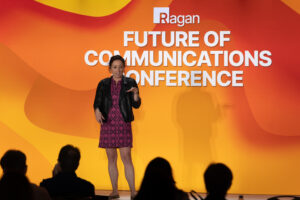PR pros discuss the art of the international pitch
Cultural nuances can play a major role in landing a placement.
Trevor Hale doesn’t believe the fundamentals of pitching a news story in the United States are all that different from doing so anywhere else in the world. Both require a tailored pitch that’s clear and to the point.
The major differences aren’t so much rooted in PR best practices as they are in understanding the culture you’re trying to win a placement.
Hale, a longtime communications executive for several Fortune 100 companies such as Ford, said every country has its own cultural traditions and media landscapes that are important to consider – and respect – while making a pitch.
“You need to think about specific markets to make sure you’re bringing value to them,” said Hale, who’s led media relations efforts throughout North America, Europe the Middle East, Africa and Asia-Pacific.
“It’s super important to be mindful of all the nuances,” he continued. “Depending on people’s beliefs and backgrounds, there can be a lot of complexity.”
Understanding cultural nuances
There are a lot of similarities between pitching in North America, Great Britain, western Europe and even Australia, Hale said. He noted that the media landscape and infrastructure are similar to the U.S., with big daily newspapers, round-the-clock news coverage and political correspondents.
But these countries also share similar standards of living, cultural ties and public calendars largely based on Christian holidays.
In the Middle East, by comparison, there are major elements related to Islam that a PR campaign must take into account. The timing of Ramadan can influence when reporters are available and what they’re covering. Planning to host an in-person networking event? Many Islamic countries have strict social codes about alcohol.
Gift-giving is common practice in China, and something many companies take part in as part of their media relations strategy, Hale said. His team would often give traditional mooncakes to reporters around the time of China’s Mid-Autumn Festival (or Moon Festival) while he was working for auto manufacturers such as Infiniti and Mercedes-Benz.
Another common tradition is handing out red envelopes – hongbao in Mandarin – that contain cash for “transportation fees” to reporters to encourage them to show up to events. That also happens in other parts of Southeast Asia.
“Just knowing about those things can make the difference,” Hale said. “You want to make sure you get that right.”
Hale described a general blurring of the lines between editorial and advertising in China.
Sometimes that blurring is harmless, such as local media receiving gifts during Chinese New Year. But Hale has also had situations where columnists would threaten to publish a negative story about his company or one of its executives unless he agreed to buy an ad in the paper.
Navigating taboos
While it’s important to respect the culture being pitched, it’s just as important to avoid offending it.
Every country has culturally sensitive topics that may be too taboo to discuss in the media, according to Daniel Kamau, senior public relations specialist for Compassion International. The international nonprofit assists impoverished children in 29 countries across Africa, Latin America and the Caribbean.
Throughout Africa, for instance, things related to the Rwanda genocide, marriage traditions, LGBTQ+ issues and other social issues are very sensitive and have to be “carefully navigated,” Kamau said. But those things vary by nation and, in some instances, by region.
Kamau added that many publications in Africa, Asia and elsewhere are “highly regulated” by their country.
Newsrooms differ
Kamau has worked with reporters from all over the world. He noted that those from more “developed countries,” namely North America and Europe, tend to be “much more aggressive” in their questioning approach.
By contrast, those in Kenya, where Kamau lives, and other developing countries tend to be more “relationship oriented.”
“They may beat around the bush and avoid being overly punchy because they’re trying to build a (readership) base” and don’t want to anger their sources, he added.
In China, on the other hand, there tends to be a clear hierarchy among journalists. Hale said certain “VIP” outlets, mostly state-run media outlets, like Xinhua, command special treatment.
Having a strong relationship with the editors and those at the “top of the outlet” is important everywhere. But Hale said they matter even more in markets like India where there are a considerable number of outlets. He recalled a few press conferences where hundreds of journalists showed up.
“It was very important to know the top editors to help strategize and prioritize time with executives,” Hale said.
Tapping into local knowledge
Trying to understand the cultural issues in a place thousands of miles away can be difficult for someone who doesn’t interact with it every day, Kamau said.
Being able to pitch to a local outlet with a deep understanding of the cultural and media landscape can make all the difference. Kamau suggested partnering with a PR firm or agency in the country you’re pitching to help present it through a truly local lens.
Another option is to sit down with international reporters from that country for cultural awareness sessions and study their work. Hale believes strongly in immersion trips – a couple weeks to a month at a time – for anyone who’s regularly pitching overseas.
“There’s nothing like being on the ground in terms of learning culture,” he said.
Casey Weldon is a reporter for PR Daily. Follow him on LinkedIn.







